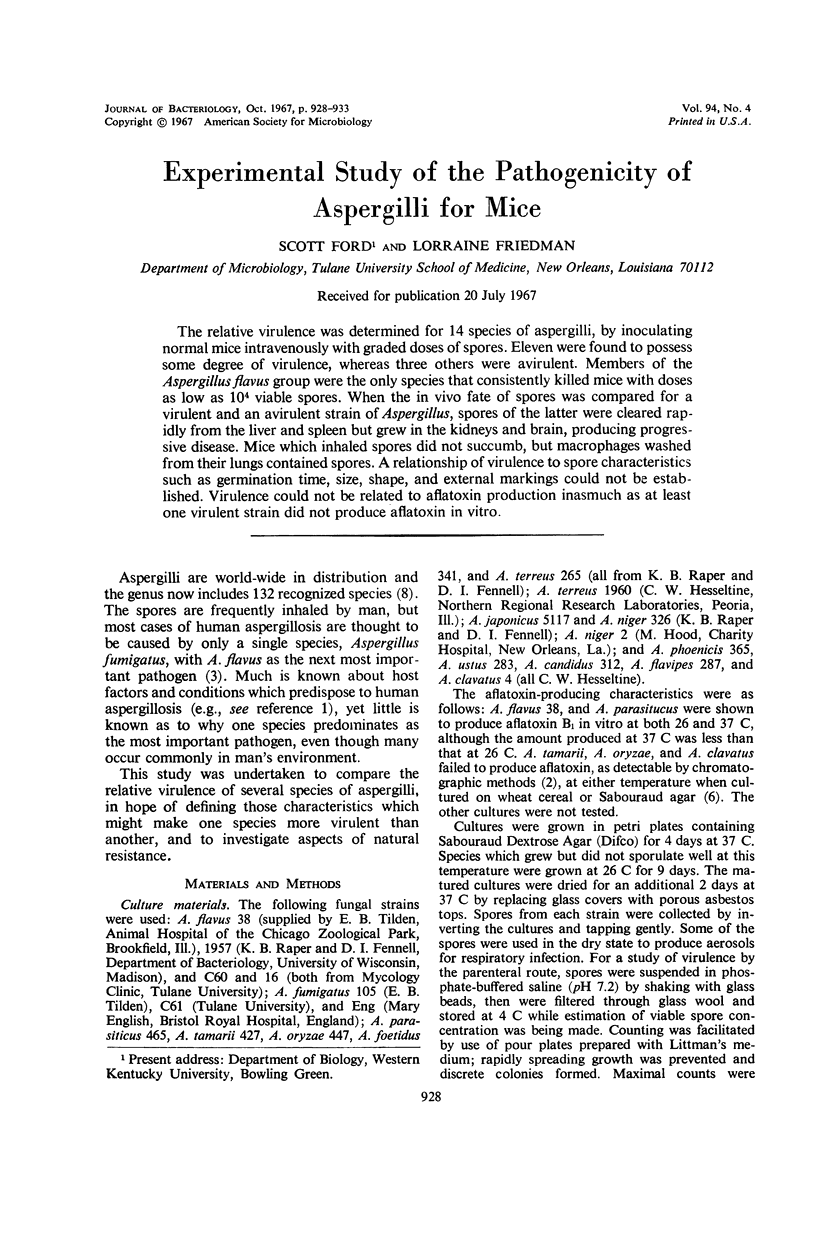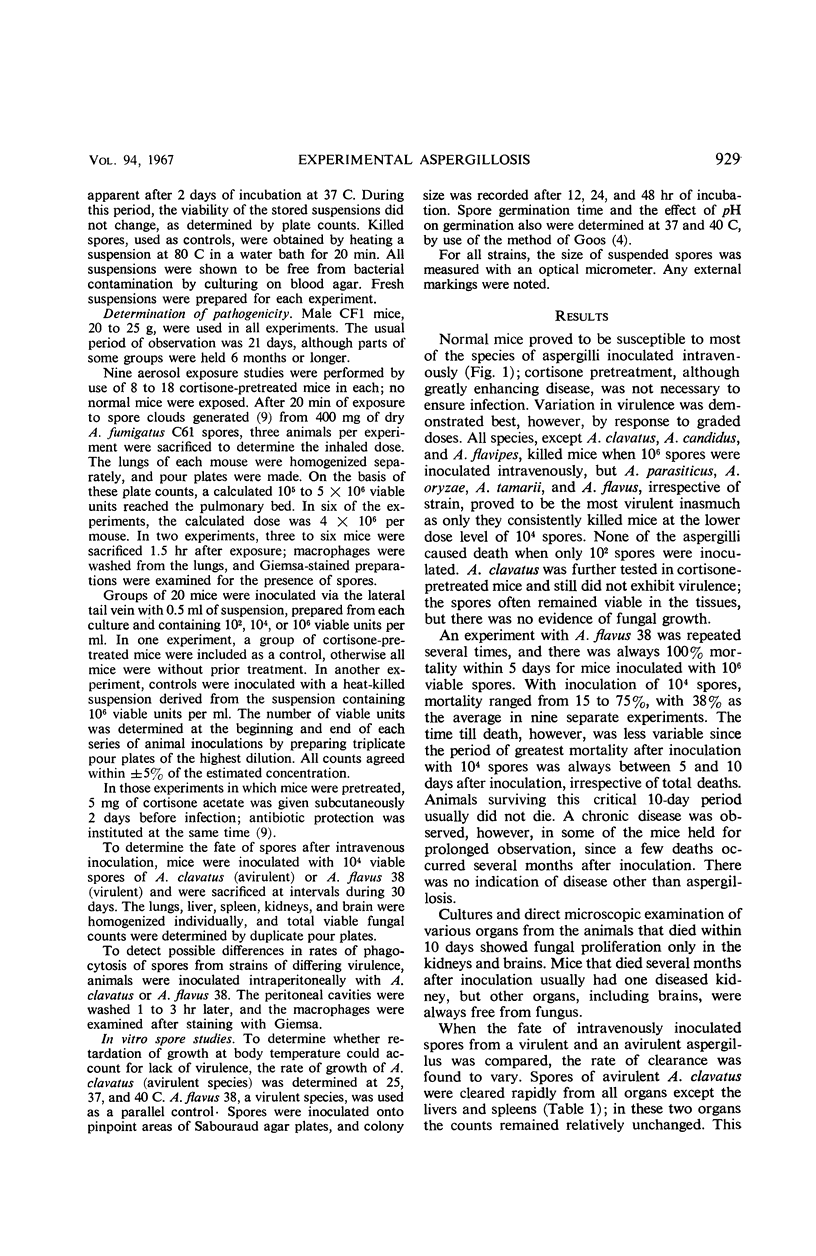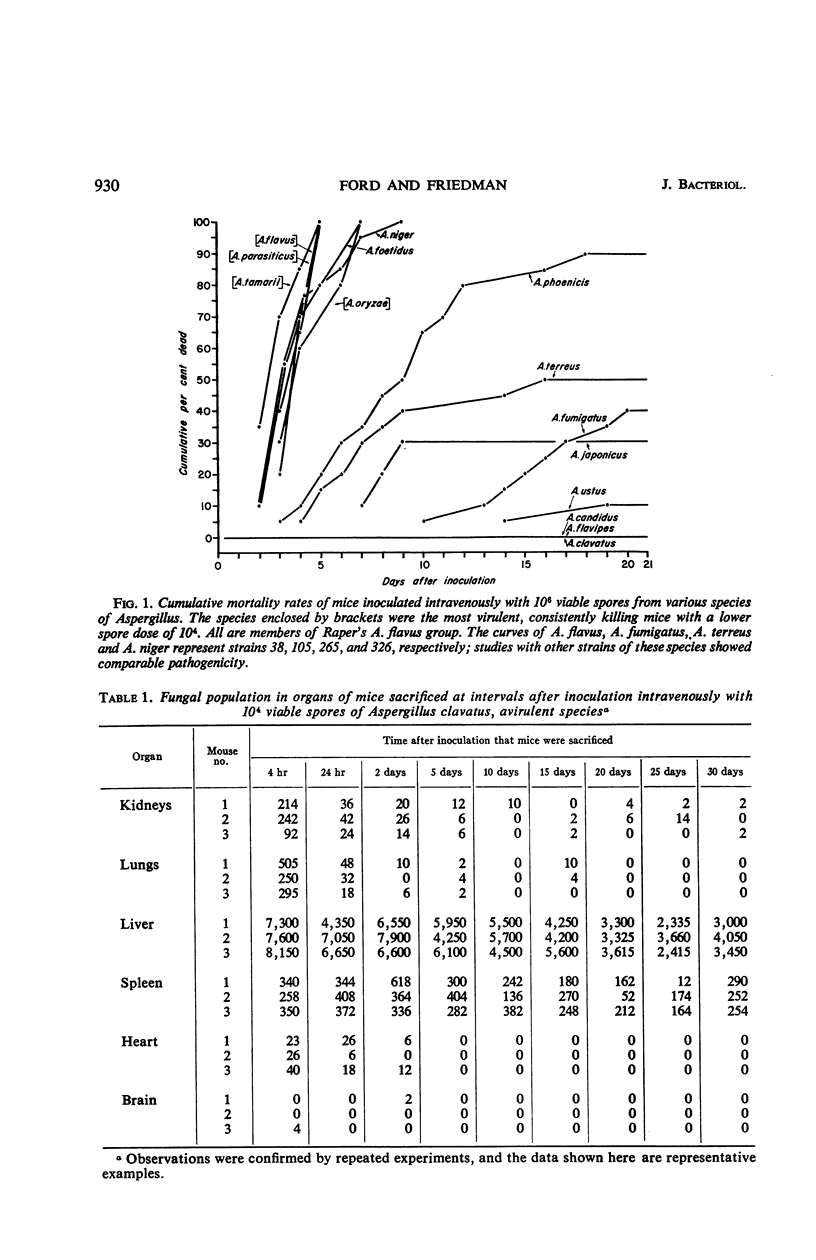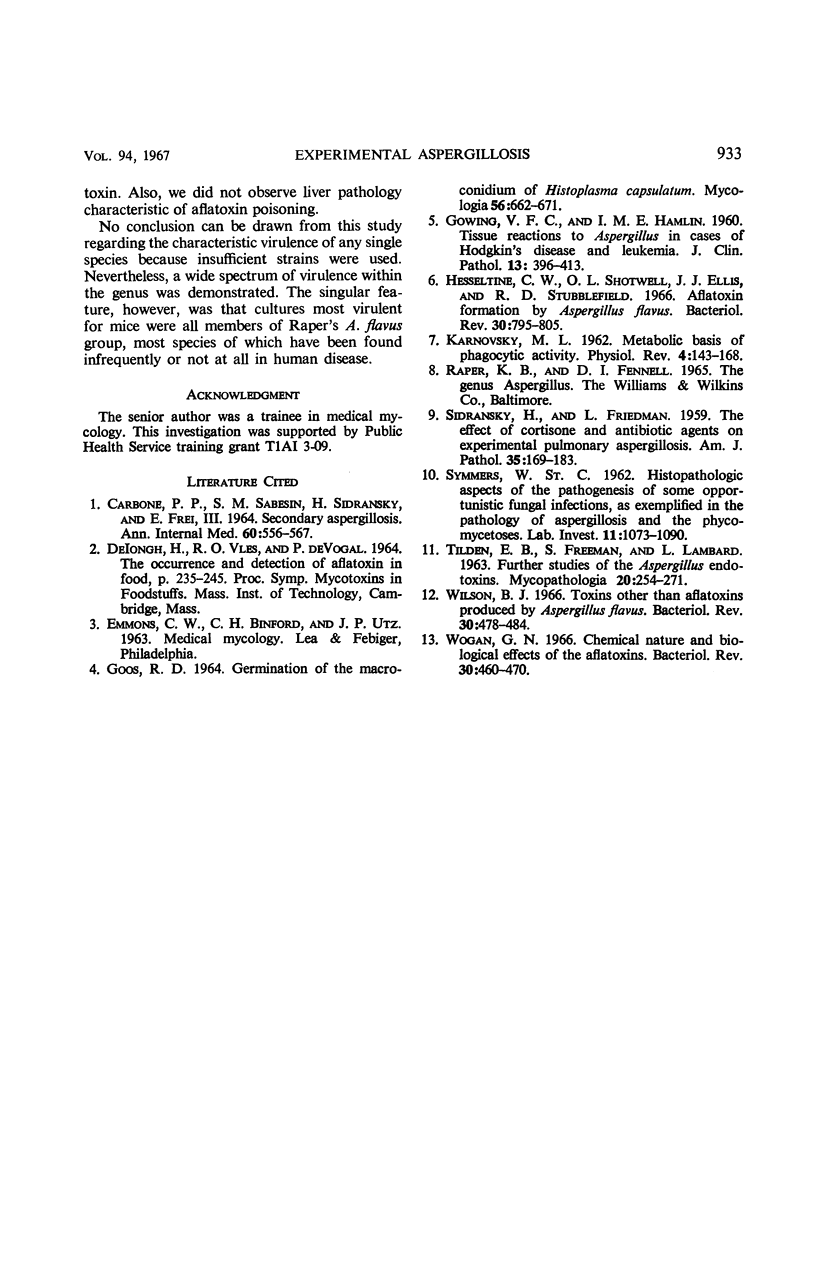Abstract
The relative virulence was determined for 14 species of aspergilli, by inoculating normal mice intravenously with graded doses of spores. Eleven were found to possess some degree of virulence, whereas three others were avirulent. Members of the Aspergillus flavus group were the only species that consistently killed mice with doses as low as 104 viable spores. When the in vivo fate of spores was compared for a virulent and an avirulent strain of Aspergillus, spores of the latter were cleared rapidly from the liver and spleen but grew in the kidneys and brain, producing progressive disease. Mice which inhaled spores did not succumb, but macrophages washed from their lungs contained spores. A relationship of virulence to spore characteristics such as germination time, size, shape, and external markings could not be established. Virulence could not be related to aflatoxin production inasmuch as at least one virulent strain did not produce aflatoxin in vitro.
Full text
PDF





Selected References
These references are in PubMed. This may not be the complete list of references from this article.
- CARBONE P. P., SABESIN S. M., SIDRANSKY H., FREI E., 3rd SECONDARY ASPERGILLOSIS. Ann Intern Med. 1964 Apr;60:556–567. doi: 10.7326/0003-4819-60-4-556. [DOI] [PubMed] [Google Scholar]
- GOWING N. F., HAMLIN I. M. Tissue reactions to Aspergillus in cases of Hodgkin's disease and leukaemia. J Clin Pathol. 1960 Sep;13:396–413. doi: 10.1136/jcp.13.5.396. [DOI] [PMC free article] [PubMed] [Google Scholar]
- Hesseltine C. W., Shotwell O. L., Ellis J. J., Stubblefield R. D. Aflatoxin formation by Aspergillus flavus. Bacteriol Rev. 1966 Dec;30(4):795–805. doi: 10.1128/br.30.4.795-805.1966. [DOI] [PMC free article] [PubMed] [Google Scholar]
- KARNOVSKY M. L. Metabolic basis of phagocytic activity. Physiol Rev. 1962 Jan;42:143–168. doi: 10.1152/physrev.1962.42.1.143. [DOI] [PubMed] [Google Scholar]
- SIDRANSKY H., FRIEDMAN L. The effect of cortisone and antibiotic agents on experimental pulmonary aspergillosis. Am J Pathol. 1959 Jan-Feb;35(1):169–183. [PMC free article] [PubMed] [Google Scholar]
- SYMMERS W. C. Histopathologic aspects of the pathogenesis of some opportunistic fungal infections, as exemplified in the pathology of aspergillosis and the phycomycetoses. Lab Invest. 1962 Nov;11:1073–1090. [PubMed] [Google Scholar]
- Wilson B. J. Toxins other than aflatoxins produced by Aspergillus flavus. Bacteriol Rev. 1966 Jun;30(2):478–484. doi: 10.1128/br.30.2.478-484.1966. [DOI] [PMC free article] [PubMed] [Google Scholar]
- Wogan G. N. Chemical nature and biological effects of the aflatoxins. Bacteriol Rev. 1966 Jun;30(2):460–470. doi: 10.1128/br.30.2.460-470.1966. [DOI] [PMC free article] [PubMed] [Google Scholar]


